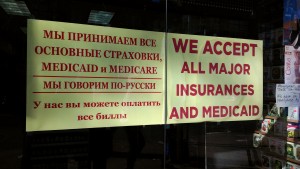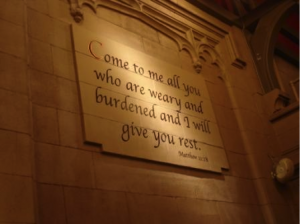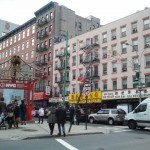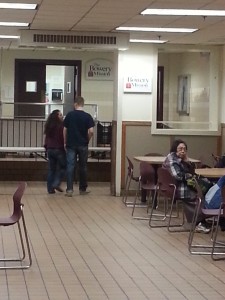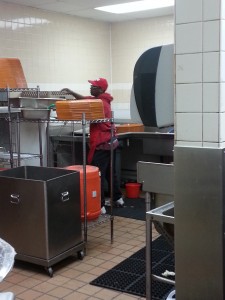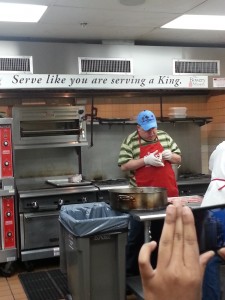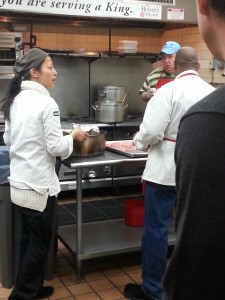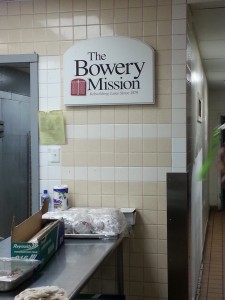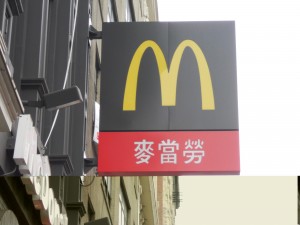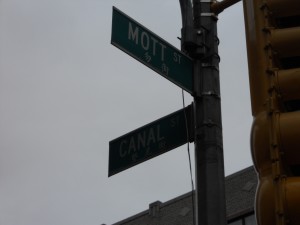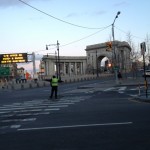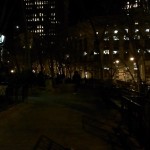During my excursion to Avenue U in Brooklyn with Yelena Krasnozhen we discovered that even though the majority of the people living in that area are Chinese, there is also a large and significant number of Russian-speaking there. Lots of stores, pharmacies, and businesses that we saw along Avenue U and adjacent avenues were a mix of Chinese and Russian, and what is even more interesting is that lots of Chinese businesses that we saw were advertising various features in Russian. Some also had signs that said “we speak Russian” but then when we entered it appeared to be a solely Chinese business with Chinese owners and employees. We did not find Russian-speaking people there, but then we also didn’t specifically ask for them.
For example, the U 15 Pharmacy pictured here is mainly advertised as a Chinese pharmacy as one can tell because of the Chinese-character writing that is most prominent one on the blue header of the store. It says “аптека” right below it, which means pharmacy in Russian and it is written in Russian Cyrillic. This shows how this store targets both populations that make up the largest percentage of the people living in this area. We started realizing how large the Russian-speaking population here must be after seeing so many examples of such business advertising. We walked into this pharmacy thinking about asking both the Chinese and the Russian people about their experiences during Hurricane Sandy but we only found Chinese employees and customers there. Even though we did not see Russian people in there, the store is still targeted toward them too and the Russian writing on it is inviting.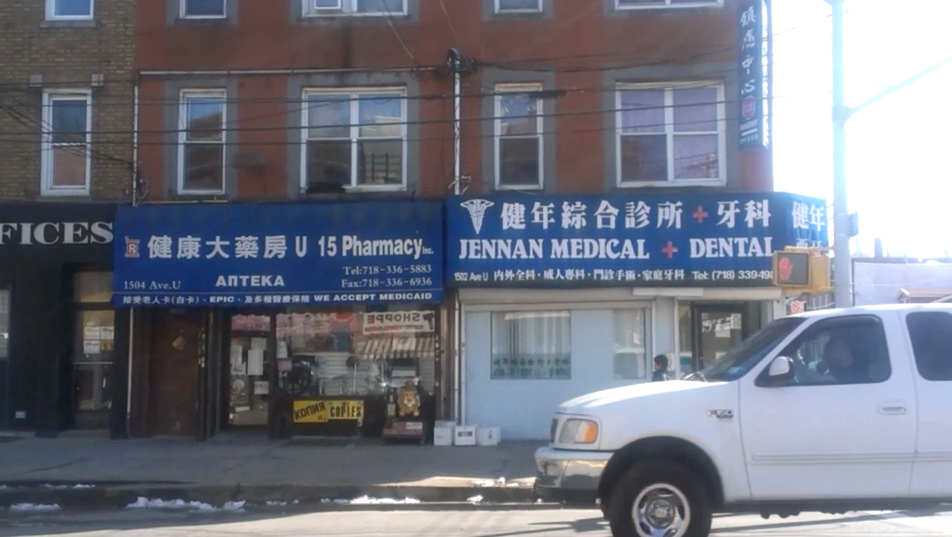
Below is an herb and acupuncture business. It appears to be Chinese owned and the employees there were also Chinese, but it had rather curious signs that advertised their services on their door. This store is an example of one of those places that made sure they wrote out what they offer in both Chinese characters and Russian.

Here is a close-up photograph of this Acupuncture business’ door. The entire orange paper on the left is written in Russian, telling about all the different services offered in this business and how beneficial these procedures are. The pink sign on the right is in Chinese and English (notice how English is the smallest writing comparing to the Russian and Chinese) and another orange sign in Russian advertising the health benefits of the massages offered. Again this all shows how the neighborhood is mostly composed of not only Chinese but also Russian-speaking people. 
Looking down a block of Avenue U, one sees mostly Chinese businesses with a few “English” ones in the mix, and then there are Russian pharmacies and stores. There were places like Lotus Bridal, Health Star Pharmacy Inc right across the street from Jennan Medical and Dental (both with as much Chinese writing on them as they had English), Paul’s Hair Salon Inc that showed a list of their services in Chinese only, etc. There were also Chinese bakeries and major supermarkets full of specialty Chinese foods and tea.
This store called International Food was more precisely a Russian food store, which becomes more obvious once one walks in or sees the other side of it not pictured here. It had big advertisements for Russian beer, and then inside there was food of various Russian brands. A girl that was behind the counter looked to be of Central Asian-Russian origin and she spoke Russian.

This International Food store was on Avenue Y, a couple residential blocks down from Avenue U. While walking down there, we also saw Muslim women. Also, there is most likely a sizable Jewish population, since a couple of blocks down from Avenue U we saw a Jewish Culture Center. So even though the neighborhood is dominated by two cultures, it is still quite diverse. 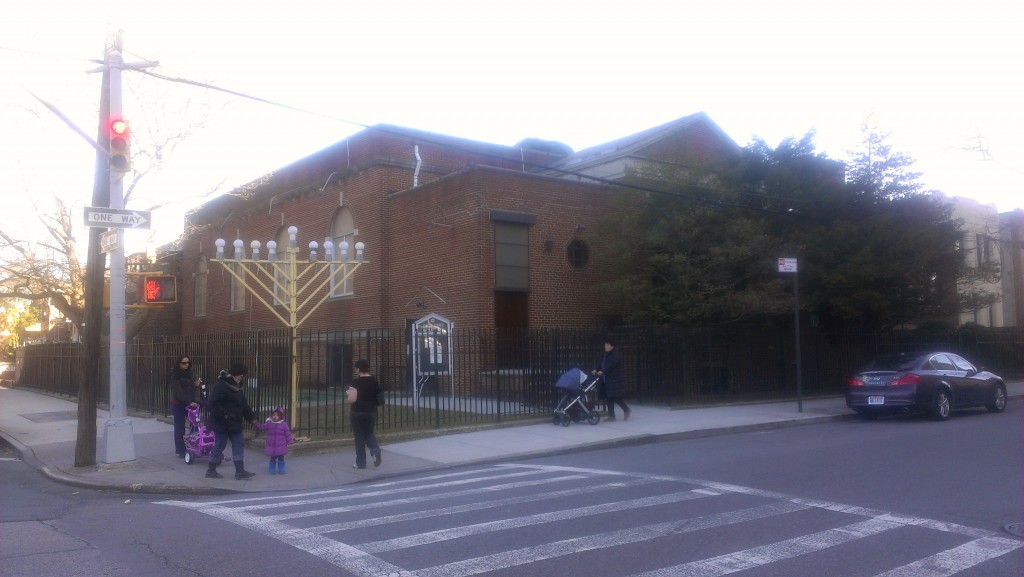
As for Hurricane Sandy interviews, we asked employees in stores if the business they work at was affected by the hurricane. We also tried to ask a couple of people if they live near this area and if their homes were affected, but frankly most people were startled enough when we initially simply approached them with our friendly “can we just ask you a couple questions”. I felt like because of our age (we were mostly noticeably younger than the people we were speaking to) and our strange questions about something that happened months ago it was really uncomfortable asking the people such personal questions. Asking about the business they are working at seemed more normal, but questions like “do you live around here” did not feel polite or acceptable. The atmosphere that we had, asking someone questions in a pharmacy with people waiting or in a busy bakery by the cash register, was not one that was fit for such a conversation. It was difficult to ask anyone about their home since it felt impolite and invasive at that point, especially if questions were related to whether there was “support between neighbors” and whether these people even speak to their neighbors.
Nevertheless, from the people that did agree to speak with us, we found out that:
- The U 15 pharmacy pictured above did not get flooded and only had power outage for one day, and the business quickly resumed to normal.
- The cashier lady at a bakery on Avenue U told us she lives two blocks south from the bakery and that her home had a power outage for one week and was it flooded. She said Avenue U was not flooded but buildings a couple blocks south from it (like her home) were.
- A man who works in a Russian business on Ave U said there were no power outages on Avenue U and that there was no flooding on the avenue whatsoever. He was quite surprised we had questions about Hurricane Sandy. He also said that it was Avenue Y and lower that had water damage and power outages.
- We asked a Russian pharmacist who worked in a Russian pharmacy on Avenue U about hurricane Sandy and she also said there was no damage on Avenue U and especially in their store. There was electrical outage either. We also asked her if this neighborhood is not only majority Chinese (as we previously thought it was) but also has a large Russian-speaking community. She said that it is true, the neighborhood is majority Chinese but the Russian-speaking community is also very prevalent.
- The lady who works at the International Food store that is located on Avenue Y (that so many others said was damaged by the hurricane) said that their basement was flooded but the store itself was mostly alright. It needed cleaning up after the basement flood before reopening again, but there was no power outage.
- Some people said they did not have time to speak to us and it was understandable because it was the middle of a busy workday. We encountered a language barrier with some other people and they did not seem to understand what we wanted to know.
Here are some examples of the things I mentioned: Chinese businesses, Chinese products in a large supermarket, Russian signs on businesses.


